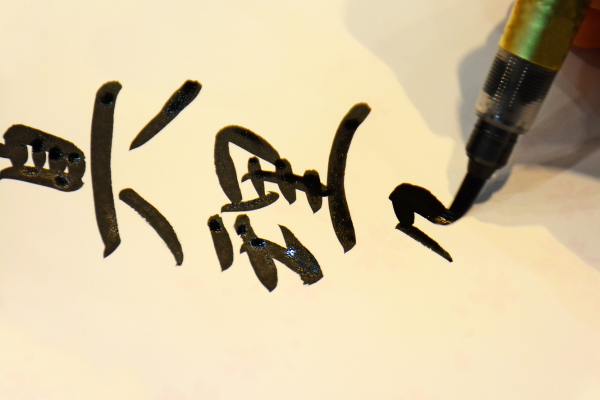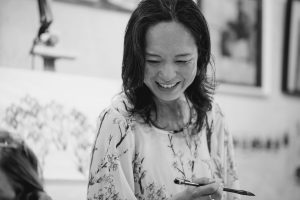The Essence of Japanese Painting and Calligraphy
The Japanese painting, particularly the art of Sumi-e, has its roots deeply intertwined with the tradition of calligraphy. Both disciplines share similar tools – ink, brush, and paper – and require precise control of the brush stroke. But the connection between Japanese painting and calligraphy goes beyond mere technique, it’s about a synergy in their spiritual and aesthetic essence.
A Shared Language of Brush Strokes
In Japanese painting and calligraphy, each brush stroke is an expression of energy and movement. The weight of the stroke, its thickness, its direction, and even the speed at which it’s executed, all convey a specific meaning. This shared language of brush strokes allows artists from both fields to convey not only visual images but also abstract emotions and thoughts.
Zen Spirit in Painting and Calligraphy
Both disciplines are heavily influenced by Zen philosophy. In the practice of Zen, one seeks to achieve a state of “mu-shin” or “no-mind,” in which the mind is free of conscious thoughts and becomes receptive to the present moment. Both Japanese painting and calligraphy require this state of mindfulness and presence.
Calligraphy as the Foundation of Japanese Painting
Historically, calligraphy is considered the foundation of Japanese painting. Artists who mastered calligraphy were highly respected, as this skill required exceptional control and discipline.
Training and Technique
Japanese painting artists often began their training by learning calligraphy. This training allowed them to develop a skillful handling of the brush and a deep understanding of the interplay between ink and paper. Although calligraphy focuses on written characters and Japanese painting on images, the skills and techniques learned in calligraphy can be directly applied to painting.
The Importance of the Stroke
In calligraphy, each stroke is definitive. Corrections can’t be made once the brush touches the paper. This same mentality applies to Japanese painting. Each brush stroke is deliberate and precise, charged with the energy and intention of the artist.
Japanese Painting and Calligraphy: Complementary Expressions
Integrated Compositions
It is common in Japanese painting to see the integration of calligraphy into the pictorial composition. Calligraphic characters can be part of the artwork itself, contributing an additional element of meaning and beauty.
Tools and Materials
The tools and materials used in Japanese painting and calligraphy are virtually the same. Both painters and calligraphers use brushes of various sizes, sumi ink, rice paper, and an ink stone to grind the ink stick and mix it with water.
In conclusion, Japanese painting and calligraphy are intrinsically linked in terms of technique, philosophy, and practice. These two art forms complement and enrich each other, offering a unique visual and aesthetic language that captures the essence of Japanese culture and tradition.



